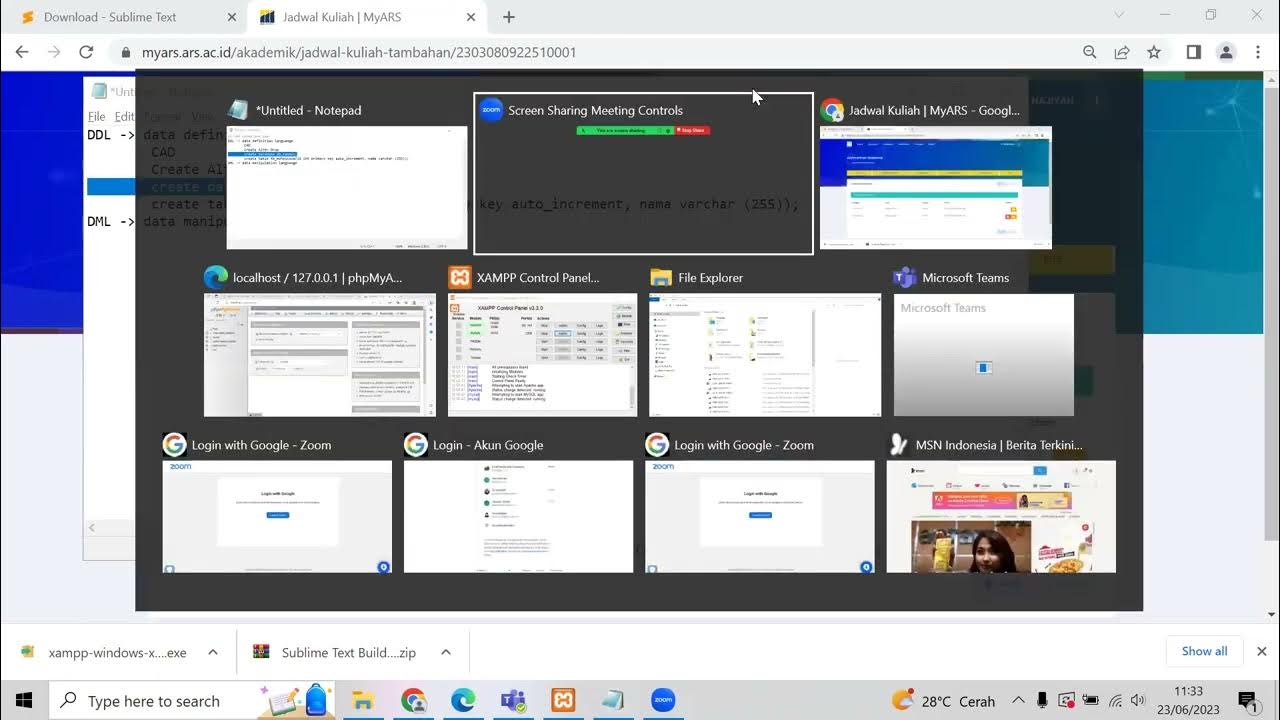SQL from basic to Advanced | Types of Commands in SQL - Day - 2
Summary
TLDRThis video tutorial introduces the five key types of commands in SQL: DDL (Data Definition Language), DML (Data Manipulation Language), TCL (Transaction Control Language), DCL (Data Control Language), and Data Query Language. The presenter explains the practical uses of each command, such as creating, altering, and deleting databases, manipulating data, controlling transactions, and managing access. Additionally, the video contrasts SQL with NoSQL databases and provides real-world applications for both types. The session concludes with an invitation to take an exam for certification and a reminder to share the video for others to learn SQL.
Takeaways
- 😀 SQL commands are divided into five main types: DDL, DML, TCL, DCL, and DQL.
- 😀 DDL (Data Definition Language) commands like CREATE, ALTER, and DROP are used for database structure management.
- 😀 DML (Data Manipulation Language) commands such as INSERT, UPDATE, and DELETE modify data within the database.
- 😀 TCL (Transaction Control Language) commands like COMMIT, ROLLBACK, and SAVEPOINT manage transactions in SQL.
- 😀 DCL (Data Control Language) commands, such as GRANT and REVOKE, handle user access control in the database.
- 😀 DQL (Data Query Language) primarily involves the SELECT command, which is used to retrieve data from the database.
- 😀 In PostgreSQL, SELECT is considered a separate command, while in other RDBMS, it's included with DML or DCL commands.
- 😀 Always use COMMIT and ROLLBACK with caution to avoid unintended changes, especially in critical databases.
- 😀 The main difference between SQL and NoSQL lies in how data is stored: SQL uses tables and rows, while NoSQL uses structures like key-value pairs or documents.
- 😀 SQL databases are suitable for applications with structured data and complex requirements, such as banking or ERP systems, while NoSQL is ideal for large-scale data and real-time analytics applications like social media platforms.
Q & A
What are the five types of commands in SQL?
-The five types of commands in SQL are DDL (Data Definition Language), DML (Data Manipulation Language), TCL (Transaction Control Language), DCL (Data Control Language), and DQL (Data Query Language).
What does DDL stand for and what is its purpose?
-DDL stands for Data Definition Language. It is used to define and manage the structure of a database, including creating, altering, and deleting database objects like tables.
Can you give examples of DDL commands?
-Examples of DDL commands include CREATE, ALTER, DROP, and TRUNCATE. These commands are used for creating, modifying, and deleting database objects.
What is the main difference between DELETE and DROP in SQL?
-DELETE is used to remove specific rows from a table, while DROP removes an entire table or database, along with all of its data.
What role does DML play in SQL?
-DML (Data Manipulation Language) is used to manage data inside the database. Common DML commands include INSERT, UPDATE, DELETE, and SELECT, which allow you to insert new data, modify existing data, delete data, and retrieve data from the database.
What are the key commands under TCL and their purposes?
-TCL (Transaction Control Language) includes commands like BEGIN, COMMIT, ROLLBACK, and SAVEPOINT. These commands manage database transactions by initiating, committing, undoing, or saving points within transactions.
What does the COMMIT command do in SQL?
-The COMMIT command is used to save all changes made during a transaction to the database permanently.
What is the purpose of the ROLLBACK command?
-The ROLLBACK command is used to undo or revert changes made during a transaction, effectively canceling the changes since the last COMMIT.
How does DCL (Data Control Language) work in SQL?
-DCL is used to manage access control in the database. The primary commands in DCL are GRANT, which gives users permission to access or modify data, and REVOKE, which removes those permissions.
What is the main difference between SQL and NoSQL databases?
-SQL databases store data in structured tables with rows and columns, typically used for transactional and complex applications like banking systems. NoSQL databases, on the other hand, store data in formats like key-value pairs, documents, or graphs and are used for handling large-scale, unstructured data, such as in social media or big data applications.
Outlines

This section is available to paid users only. Please upgrade to access this part.
Upgrade NowMindmap

This section is available to paid users only. Please upgrade to access this part.
Upgrade NowKeywords

This section is available to paid users only. Please upgrade to access this part.
Upgrade NowHighlights

This section is available to paid users only. Please upgrade to access this part.
Upgrade NowTranscripts

This section is available to paid users only. Please upgrade to access this part.
Upgrade NowBrowse More Related Video

All Types of SQL Commands with Syntax & Example | DDL, DQL, DML, DCL, TCL | Learn SQL Commands Types

DDL, DML, DCL & TCL statements in SQL (Database basics)

L4 : Types of SQL Commands | Complete SQL Course 2024 | Jobs | Placements

01. Pengantar Singkat Basis Data dan MySQL

Lec-56: Difference between Alter and Update in SQL with examples in Hindi | DBMS

MYSQL
5.0 / 5 (0 votes)